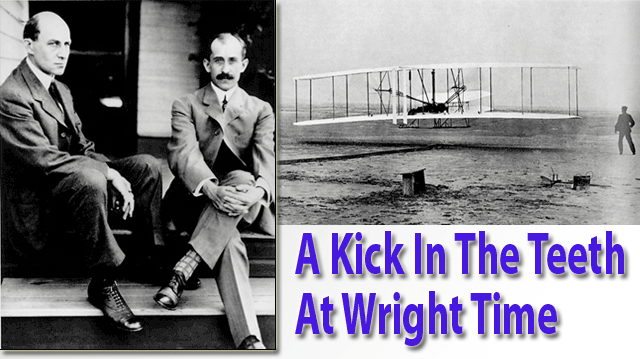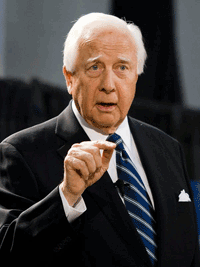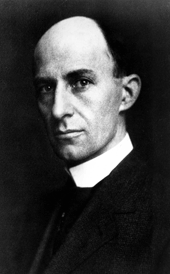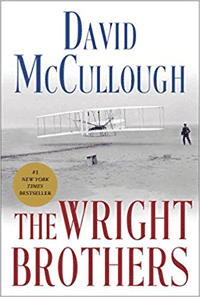 |
President Truman said that the only
news is history you don’t know.
Maybe the best argument for continually
paying attention to history, is so that we might learn from what we missed.
No doubt some direction as to how
to set history straight is included in the opening words Thomas Jefferson
chose while writing the American Declaration of Independence:
“When in the Course of human
events,” Jefferson wrote.
Everything we do or have done connects
us as humans, and is part of the history that got us where we are today.
The Wright Track
Take the Wright Brothers as example.
This week as we recall man’s
first powered flight in an airplane by the Wright Brothers, we think,
that those two brothers who changed the world were certainly in real life
much more than people in some flinty black and white film and pictures.
We mark that event 116 years ago on
December 17, when the Ohio Brothers were at the beach in North Carolina
with plenty of high winds and soft sands as they took off and landed in
a tiny bi-plane, an event that changed the world forever.
Taking For Granted
Today in a world as you routinely
direct or load cargo onto an airplane that takes off and soars up to seven
miles above the earth landing somewhere around the world within a few
hours, it is good to discover news about what led up to these two guys
making that first flight.
Bishop Wright Award & Path
Forward
 I
was looking at a plaque hanging in my office that was presented to me
at a lavish luncheon held at JFK International Airport in 2002 when I
was given The Protestant Chapel at JFKIA, New York City Council of Churches
Bishop Wright Award as “Man of the Year” for advocating for
aviation and air cargo with our publication, Air Cargo News. I
was looking at a plaque hanging in my office that was presented to me
at a lavish luncheon held at JFK International Airport in 2002 when I
was given The Protestant Chapel at JFKIA, New York City Council of Churches
Bishop Wright Award as “Man of the Year” for advocating for
aviation and air cargo with our publication, Air Cargo News.
Thinking about the Protestant cleric,
who was Orville & Wilbur’s father, and for whom the award was
named, being bestowed the award was a great honor for me.
Recently Bishop Wright came into full
memory and focus again when I discovered a speech that popular historian
David McCullough (left) delivered at the Massachusetts Historical
Society in Boston.
Mr. McCullough said that he discovered
some writings about Wilbur in Bishop Wright’s diary while researching
for his epoch 2015 book titled “The Wright Brothers” that
was published by Simon & Schuster.
Something New A Century Old
What was revealed just a few years
ago is the “news” here.
“Wilbur was a genius,”
McCullough contends.
“Orville was also quite capable
but Wilbur was the one.
“Both had only high school educations.
“However today their home, now
a museum, remains filled with many books, including great classics of
modern literature and science indicating a family of avid readers.
“We found a diary kept by Bishop
Wright.
“It was the first time that
we uncovered original material that had not already appeared in one form
or another elsewhere,” the two-time Pulitzer Prize (Truman/John
Adams) winner revealed.
Wilbur Gets His Teeth Knocked Out
 What the author discovered in the
Bishop Wright diary is news from another time that sheds light on the
true human nature of history. What the author discovered in the
Bishop Wright diary is news from another time that sheds light on the
true human nature of history.
“When he was about 18 years
old, Wilbur (right) was hit in the teeth with a hockey stick
during a pick up game with some neighborhood friends, that knocked out
all of his upper teeth,” McCullough said.
“Aside from primitive dentistry
and excruciating pain, Wilbur, a handsome young athletic young man was
so disfigured, his face was hard to look at.
“Wilbur retreated into a self-imposed
isolation at home in Dayton, Ohio.
“He gave up plans to attend
Yale University, preferring to stay at home to look after his Mom who
was dying of tuberculosis, and it was then he began to read in this self-imposed
isolation that lasted three years.
“The time caused a terrific
swerve in his life’s direction
“Wilbur set off on a pursuit
of knowledge, writing to the Smithsonian asking for information and the
rest is history.
“This was the time that set
Wilbur Wright on the path that led him to the invention of the airplane,”
Mr. McCullough said.
“The question is who hit Wilbur
in the teeth and was it intentional?”, David McCullough wondered.
“In Bishop Wright’s diary
there is an entry post Wilbur’s death, after he died tragically
in 1912 at age 40 of typhoid fever.
“He writes to explain who the
boy was that hit Wilbur and later what happened to him.
“His name was Oliver Haugh,”
Mr. McCullough explains, “a boy who lived right around the corner
from the Wrights in the same neighborhood.”
Ultimate Expression of Evil
“Haugh later became the most
notorious murderer in the State of Ohio.
“He killed his father, his mother,
his brother and an estimated 12 others or more.
“Isn’t is fascinating,”
David McCullough marvels, “that one of the geniuses in our story
of the history of flight grew up in the same neighborhood with the ultimate
expression of evil?
“Haugh was executed in 1906
but we still don’t know if he hit Wilbur on purpose but maybe someday
we might find out,” McCullough said.
“The point here is that throughout
history there is no mention anywhere of this crucial turning point.
“What a thrill it is to have
discovered this diary entry,” David McCullough concluded.
A Postscript
History is just past the moment and
always alive, with more to be learned because in some way or another we
learn the way forward, seems to be the message here.
 Orville
Carried Legacy Forward Orville
Carried Legacy Forward
As time moved on, brother Orville
Wright who was a personal friend of Paul Garber at the Smithsonian Institution
in Washington D.C., loaned that first Kitty Hawk airplane to the museum
in thanks for the information and support that helped get the first flight
off the ground.
How The Smithsonian, as Paul Garber
told me in 1987, also received Charles Lindbergh’s “Spirit
of St. Louis” placing both aircraft above glass cases filled with
airplane models and then attracting three million visitors a year, led
to creation of The National Air & Space Museum, is another story.
Sharing a great discovery is always
welcome news.
“The Wright Brothers”
is available on Amazon.
Geoffrey
|




